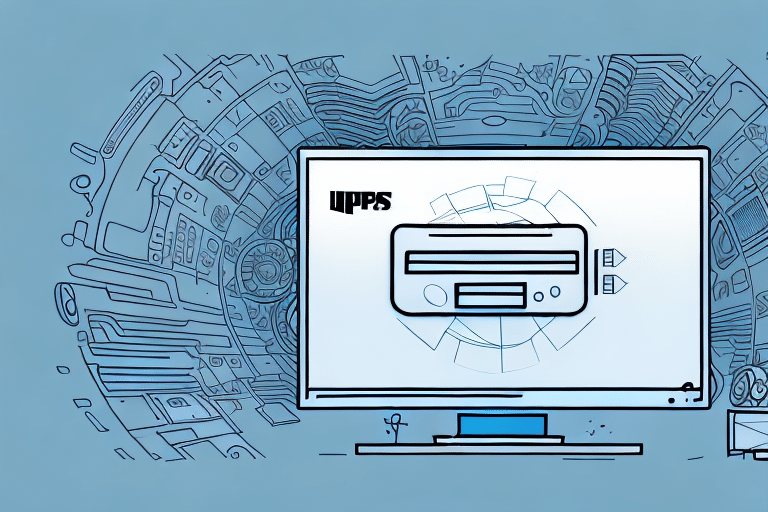Understanding UPS Shipping Rates: A Comprehensive Guide
Shipping is a critical component of the supply chain, serving as an essential factor for businesses of all types and sizes. Companies utilize a range of shipping options to ensure that their products reach customers on time and in good condition. One of the most popular carriers in the United States is UPS. Understanding their shipping rates is important for small to large businesses aiming to optimize their logistics and cost-efficiency. This article provides comprehensive information to help you make informed decisions about your shipping needs.
What Determines UPS Shipping Rates?
The cost of UPS shipping depends on a variety of factors. The following elements are typically considered:
- Weight and Size of the Package: Heavier and larger packages generally incur higher shipping costs.
- Destination: The destination zip code or international location affects the rate due to distance and delivery zones.
- Shipping Method: Options such as standard, express, overnight, or ground shipping influence the cost based on delivery speed.
- Declared Value: The declared value of the package can impact the rate, especially if insurance is required.
- Fuel Surcharge: Variable fees based on current fuel prices can affect the overall shipping cost.
Each of these variables can significantly impact the final cost of shipping. Therefore, it is crucial to consider them when estimating the UPS shipping expenses.
Additionally, the distance between the origin and destination of the package plays a vital role in determining UPS shipping rates. The farther the package must travel, the higher the shipping cost is likely to be. Moreover, the type of item being shipped can also impact the cost. For instance, hazardous materials or fragile items may require special handling and packaging, leading to increased shipping costs.
It's important to note that UPS offers various discounts and promotions throughout the year. These discounts may be based on factors such as the volume of packages shipped or the frequency of shipments. Checking with UPS for available discounts or promotions can help reduce shipping costs.
For the latest information on UPS shipping rates and factors affecting costs, refer to the official UPS Rate Options page.
How to Calculate UPS Shipping Costs
Calculating UPS shipping costs is a straightforward process, thanks to the tools and resources provided by UPS. Here’s how businesses can estimate their shipping expenses:
- Enter Package Details: Input the package weight and dimensions.
- Select Destination: Enter the destination zip code or international address.
- Choose Shipping Method: Select the desired shipping method (e.g., Ground, 2nd Day Air, Next Day Air).
- Declare Value: Indicate the declared value of the package if insurance is required.
- Obtain Estimate: View the estimated cost for shipping based on the provided information.
UPS provides an online tool known as the UPS Rate Calculator that assists businesses in estimating shipping costs accurately. However, it's essential to remember that these are estimates, and the final cost may vary slightly based on additional factors.
UPS offers various shipping options, each with its own set of costs and delivery times. For example, businesses can choose between UPS Ground, UPS 2nd Day Air, UPS Next Day Air, and more. Selecting the appropriate shipping method is crucial as it directly impacts the final cost and delivery speed.
Moreover, businesses can save on UPS shipping costs by taking advantage of discounts and promotions. UPS offers discounts to businesses that ship frequently or in large volumes, as well as to those who utilize their online shipping tools. Exploring these options can lead to significant savings.
UPS Ground vs. UPS Air: Which Shipping Method is Best for Your Business?
Choosing the right shipping method is a significant decision when using UPS. UPS offers a range of shipping methods, including air and ground shipping, each with its own advantages and disadvantages.
UPS Ground shipping is typically less expensive than air shipping. It is suitable for non-urgent deliveries and can be a cost-effective option for businesses looking to minimize shipping expenses. On the other hand, air shipping, such as UPS 2nd Day Air or UPS Next Day Air, provides faster delivery times, which is critical for time-sensitive shipments.
The choice between these two methods depends on the specific needs and constraints of the business. Factors such as shipment size, distance, delivery deadlines, and budget should be carefully considered to determine the most appropriate shipping method.
Another critical factor is the nature of the product being shipped. Fragile or perishable items may benefit from air shipping to ensure they arrive promptly and in good condition. Conversely, non-delicate items can be shipped via UPS Ground, which is generally more cost-effective.
UPS also offers additional services that can be added to either ground or air shipping, such as signature confirmation or insurance. These services provide added security and peace of mind for both the shipper and the recipient.
For a detailed comparison of UPS Ground and UPS Air services, refer to the UPS Ground Service and UPS Air Service pages.
How to Negotiate Better UPS Shipping Rates
For businesses with significant shipping needs, negotiating better UPS shipping rates can lead to substantial cost savings. To achieve this, businesses may need to demonstrate a significant shipping volume and establish a strong shipping history with UPS.
Here are some tips to effectively negotiate with UPS:
- Research Competitor Rates: Understand what other carriers are offering to leverage better deals.
- Identify Areas for Improvement: Analyze your current shipping processes to highlight potential savings or efficiencies.
- Timing is Key: Choose an appropriate time to negotiate rates, such as during contract renewals or after a period of increased business activity.
- Seek Mutual Benefits: Aim to create a mutually beneficial agreement that satisfies both your business needs and UPS’s operational capacities.
Having a clear understanding of your shipping needs is crucial during negotiations. This includes knowing the weight and size of your packages, shipment frequency, and destinations. Providing UPS with accurate and detailed information can help in securing better rates tailored to your specific requirements.
Maintaining a positive relationship with your UPS representative is also essential. A strong, collaborative relationship can facilitate negotiations and help resolve any issues that may arise in the future. Open and honest communication ensures that both parties work towards mutually beneficial solutions.
For more information on negotiating shipping rates, visit the UPS Sales Contact page.
Tips for Reducing Overall Shipping Costs with UPS
Beyond selecting the appropriate shipping method and negotiating rates, businesses can implement several strategies to reduce overall shipping costs with UPS:
- Choose Lower-Cost Shipping Options: Opt for services like UPS Ground when speed is not a priority.
- Optimize Package Dimensions and Weight: Use the smallest possible packaging to reduce weight and dimensional fees.
- Consolidate Shipments: Bundle multiple orders into a single shipment to reduce costs per unit.
- Utilize UPS Software Tools: Use UPS integrated software to streamline the shipping process and take advantage of available discounts.
- Implement Efficient Packaging Processes: Standardize packaging to minimize waste and reduce handling time.
- Monitor Fuel Surcharges: Stay informed about fuel surcharge changes and adjust your pricing or shipping strategies accordingly.
Implementing these tips can help businesses lower shipping costs, allowing them to allocate resources more effectively elsewhere.
Understanding the Various Fees Associated with UPS Shipping
The cost of UPS shipping extends beyond the base shipping rate. Additional fees can significantly impact the total shipping cost. These fees may include:
- Residential and Extended Area Surcharges: Additional charges for deliveries to residential or remote areas.
- Address Correction Fees: Fees incurred when shipment addresses need correction.
- Duty Fees, Taxes, and Tariffs: Applicable for international shipments and vary based on destination country regulations.
- Signature Requirements: Fees for requiring signatures upon delivery to ensure secure receipt.
- Additional Handling Fees: Charges for special handling needs, such as hazardous materials or oversized packages.
Understanding these additional fees allows businesses to make better-informed decisions and accurately budget for their shipping needs.
For a comprehensive list of UPS shipping fees, visit the UPS Shipping Fees page.
How to Track Your UPS Shipment and Delivery Times
Providing customers with tracking and delivery time information is essential for maintaining transparency and trust. UPS offers several ways businesses can track their shipments:
- UPS My Choice: A service that allows users to manage their shipments easily, offering options to reroute or reschedule deliveries.
- UPS Tracking: Provides real-time updates on a package's shipping status and estimated delivery date.
- UPS Mobile App: Enables tracking and managing shipments on the go.
- Customer Service: Businesses can contact UPS customer service directly for detailed shipment information.
Utilizing these tools ensures that businesses and their customers stay informed about the status of their shipments, enhancing the overall delivery experience.
For more tracking options, visit the UPS Tracking page.
Common Mistakes to Avoid When Using UPS for Shipping
To ensure smooth and cost-effective shipping with UPS, businesses should be aware of and avoid the following common mistakes:
- Incorrect Shipping Information: Failing to verify shipping addresses can lead to delays and additional fees.
- Poor Packaging: Not packaging items properly can result in damages during transit, leading to increased costs and potential claims.
- Choosing Inappropriate Shipping Methods: Selecting a shipping method that doesn't align with delivery needs can cause unnecessary expenses or customer dissatisfaction.
- Ignoring Shipping Regulations: Not adhering to UPS’s shipping guidelines and regulations can result in shipment rejections or fines.
- Neglecting to Utilize Available Discounts: Overlooking eligible discounts can lead to higher shipping costs than necessary.
By avoiding these mistakes, businesses can ensure the efficient and cost-effective delivery of their packages through UPS.
Comparing UPS Shipping Rates with Other Major Carriers
While UPS is one of the largest carriers in the United States, other carriers such as FedEx, the United States Postal Service (USPS), and DHL also offer competitive shipping services. Comparing rates and services among these carriers is essential for businesses to choose the most cost-effective and reliable option.
Factors to consider when comparing carriers include:
- Delivery Speed: Different carriers offer varying delivery timelines, which can be critical for time-sensitive shipments.
- Cost: Shipping rates can vary significantly between carriers based on the factors discussed earlier.
- Coverage: Some carriers may have better coverage in certain areas, both domestically and internationally.
- Additional Services: Services such as package tracking, insurance, and handling of special items may differ.
- Reliability and Reputation: The carrier's history of on-time deliveries and package handling can influence the choice.
By conducting a thorough comparison, businesses can select the carrier that best meets their shipping requirements and budget constraints.
For a detailed comparison of shipping carriers, refer to recent Business News Daily’s comparison of shipping carriers.
How to Save Money on International Shipping with UPS
International shipments with UPS come with additional fees such as taxes, tariffs, and customs duties. However, businesses can implement strategies to minimize these costs:
- Leverage Favorable Exchange Rates: Monitor exchange rates to take advantage of favorable conditions when calculating international shipping costs.
- Consolidate Shipments: Bundling multiple packages into a single shipment can reduce overall shipping expenses.
- Optimize Package Dimensions and Weight: Reducing the size and weight of packages can lead to significant savings on international shipping.
- Understand Import Regulations: Familiarize yourself with the import regulations of the destination country to avoid unexpected fees and delays.
- Use UPS Global Services: Utilize UPS’s specialized international shipping services that offer streamlined customs clearance and competitive rates.
Implementing these tips can help businesses control their international shipping costs and enhance profit margins.
For more information on international shipping, visit the UPS International Shipping page.
Understanding the Impact of Package Size and Weight on Your UPS Shipping Rates
Package size and weight are critical factors that significantly influence UPS shipping rates. Generally, heavier and larger packages incur higher shipping costs due to the increased use of resources required for transportation.
To minimize shipping expenses, businesses should focus on optimizing their package dimensions and weight:
- Use Appropriate Packaging: Select packaging that fits the product size closely to avoid unnecessary bulk and weight.
- Choose Lightweight Materials: Utilize lightweight packaging materials that provide adequate protection without adding excessive weight.
- Implement Efficient Packaging Techniques: Techniques such as nesting items or using multi-purpose packaging can help reduce overall size and weight.
- Regularly Review Packaging Standards: Continuously assess and update packaging standards to align with cost-saving goals and shipping requirements.
By designing packages that use the minimal necessary volume and weight, businesses can effectively reduce their shipping expenses and improve their bottom line.
For guidelines on packaging and preparing shipments, refer to UPS’s Shipping Services resources.
The Benefits of Using the UPS My Choice Program
UPS My Choice is a free service that allows users to customize their delivery experience. It provides several benefits for businesses and individual consumers, including:
- Reroute Deliveries: Change the delivery address or redirect packages to alternative locations even after the shipment is on its way.
- Reschedule Deliveries: Adjust the delivery time to better fit the recipient’s availability.
- Subscription Package Delivery Hold: Temporarily hold packages for pickup at a UPS location if someone is not available to receive them.
- Notification Alerts: Receive timely notifications about the status of shipments via email or text.
This program is particularly beneficial for businesses that may not have someone available to receive packages during regular delivery times or for those managing multiple shipments.
To enroll in UPS My Choice and learn more about its features, visit the UPS My Choice page.
How to File a Claim for Lost or Damaged Packages with UPS
Despite UPS’s commitment to ensuring the safe delivery of packages, there are instances where items may be lost or damaged during transit. In such cases, businesses can file claims for compensation. Here’s how to navigate the claims process:
- Log In to Your UPS Account: Access your UPS account to begin the claims process.
- Select the "File a Claim" Option: Navigate to the Shipping menu and select the "File a Claim" tab.
- Provide Required Information: Enter necessary details, including the package tracking number, description of the contents, and the nature of the damage or loss.
- Submit Supporting Documentation: Attach any relevant documents, such as photos of damaged items or receipts for lost goods.
- Submit the Claim: After filling in all required information and attaching documentation, submit the claim for review.
- Work with a UPS Representative: A UPS representative may contact you for additional information or to discuss the next steps in the claims process.
It is essential to file claims promptly and provide thorough documentation to expedite the resolution process. Maintaining detailed records of shipments can also facilitate smoother claims handling.
For more detailed guidance on filing claims, visit the UPS Claims page.
The Future of UPS Shipping Rates: Trends and Predictions
UPS shipping rates are influenced by a dynamic set of factors, including fuel prices, economic conditions, technological advancements, and changes in consumer behavior. While predicting exact future rates is challenging, several trends are likely to shape UPS shipping rates in the coming years:
- Technological Innovations: Continued advancements in logistics technology can enhance efficiency, potentially leading to more competitive shipping rates.
- Sustainability Initiatives: Increasing emphasis on eco-friendly practices may influence shipping methods and related costs.
- E-commerce Growth: The rise of e-commerce is expected to drive higher shipping volumes, which could impact rates through economies of scale or increased demand pressures.
- Global Economic Factors: Fluctuations in global trade, tariffs, and economic conditions will continue to affect international shipping rates.
- Fuel Prices: Volatility in fuel costs remains a significant factor influencing shipping rates, especially with fuel surcharges being a component of the total cost.
Businesses must stay informed about these trends to adapt their shipping strategies accordingly. Embracing flexible and innovative approaches can help mitigate potential cost increases and leverage new opportunities for savings.
For ongoing updates and insights into UPS shipping rates and trends, visit the UPS Newsroom.
Conclusion
UPS shipping remains a vital element of the supply chain for businesses across the United States. Understanding the factors that influence shipping rates, utilizing available tools and discounts, and implementing cost-saving strategies can significantly enhance a business's logistics efficiency and profitability. As the shipping landscape continues to evolve, staying informed and adaptable is key to maintaining a competitive edge.








